Bruce Highway – Pine River to Caloundra Road Smart Motorways (Stage 2)
The Bruce Highway - Pine River to Caloundra Road Smart Motorways (Stage 2) project will deliver additional Smart Motorways technology along a 60km section of the Bruce Highway between the Pine River and Caloundra Road.
This will further expand the network of Smart Motorways technology that has been operating on the Bruce Highway southbound between Uhlmann Road and the Pine River since 2015.
Smart Motorways technology manages traffic in real-time to reduce stop-start travel, improve safety, and offer more reliable travel times.
Smart Motorways technologies can include ramp signals, variable speed limit and message signs, vehicle detection systems and CCTV cameras. These systems work together to deliver safer, smoother, and more reliable travel times for motorists.
Benefits
- Improves safety
- Improves network efficiency
- Reduces peak hour congestion
- Reduces travel time
- Contributes to economy
- Contributes to regional growth
Key features
- Ramp signals at highway entry ramps to manage traffic entering the highway.
- Variable speed limit signs to notify motorists of speed limit changes and proactively manage incidents on the road network.
- Variable message signs to communicate with motorists about changes in road conditions.
- Vehicle detection systems that capture data to enable the operation of Smart Motorways technology.
- CCTV cameras to monitor real-time traffic conditions.
Funding
The project is jointly funded by the Australian and Queensland governments on an 80:20 basis. Investment ID 371378
- Total investment
- $105 million
- Australian Government
- $84 million
- Queensland Government
- $21 million
Current status
Early works started in February 2021, which included the installation of wireless traffic sensors. The main construction contract was awarded to Seymour Whyte Constructions in December 2021, with construction commencing in March 2022.
Ongoing project works include:
- auditing of existing electrical and Intelligent Transport System cabinets
- geotechnical investigations
- installing underground fibre optic cables, electrical cables and various Intelligent Transport Systems (ITS) devices along the Bruce Highway from Pine River to Caloundra, northern end of Gateway Motorway and northern end of Gympie Arterial Road
- works at the Gateway Motorway merge with Gympie Arterial Road to install variable speed limit signs and CCTV cameras
- ramp widening works at the northbound Bruce Highway entry ramps, from Anzac Avenue, Buchanan Road and Uhlmann Road, to install variable speed limit signs and ramp metering signals
- ramp widening works at the southbound Bruce Highway entry ramps, from Caboolture-Bribie Island Road and Buchanan Road, to install variable speed limit signs and ramp metering signals.
Testing of Smart Motorways technologies commenced in August 2023 and is now progressively underway at various locations while project works continue. All testing activities are conducted at night under traffic control with minimal impact on motorists.
Motorists can expect localised traffic changes including reduced speed limits, road shoulder and lane closures, changes to traffic flow and short-term traffic disruptions.
Construction is expected to be completed in 2024, weather and construction conditions permitting.
A key feature of the project will be in the introduction of ramp signalling at the following interchanges:
Anzac Avenue interchange northbound entry ramp
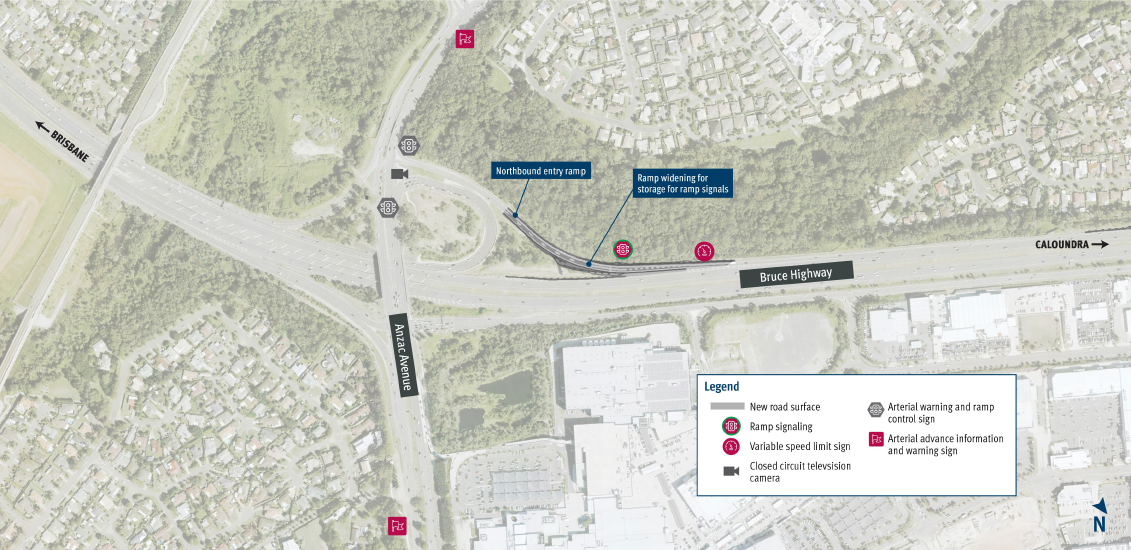
Boundary Road interchange northbound entry ramp
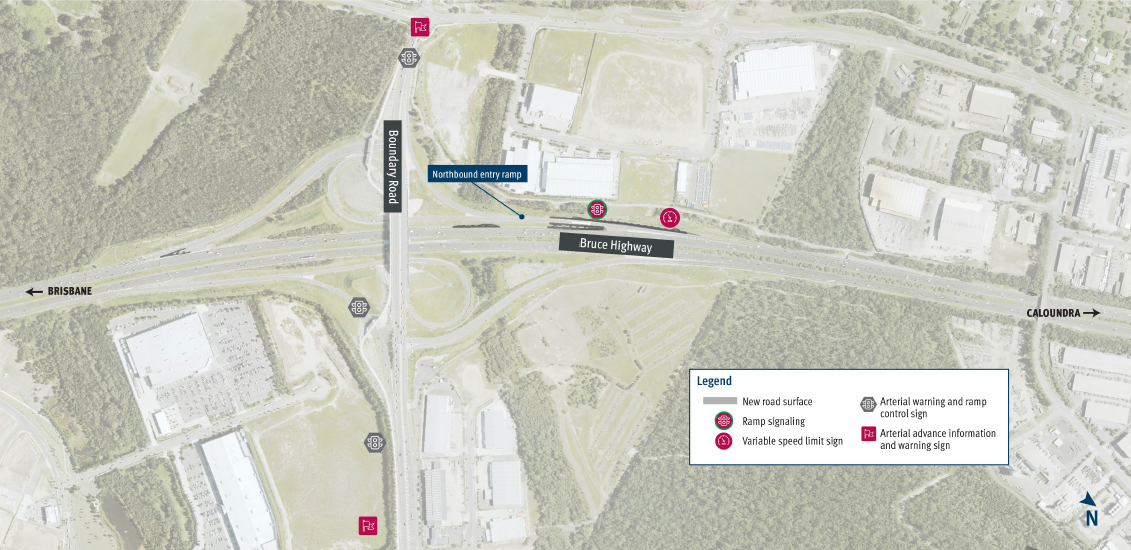
Uhlmann Road interchange northbound entry ramp
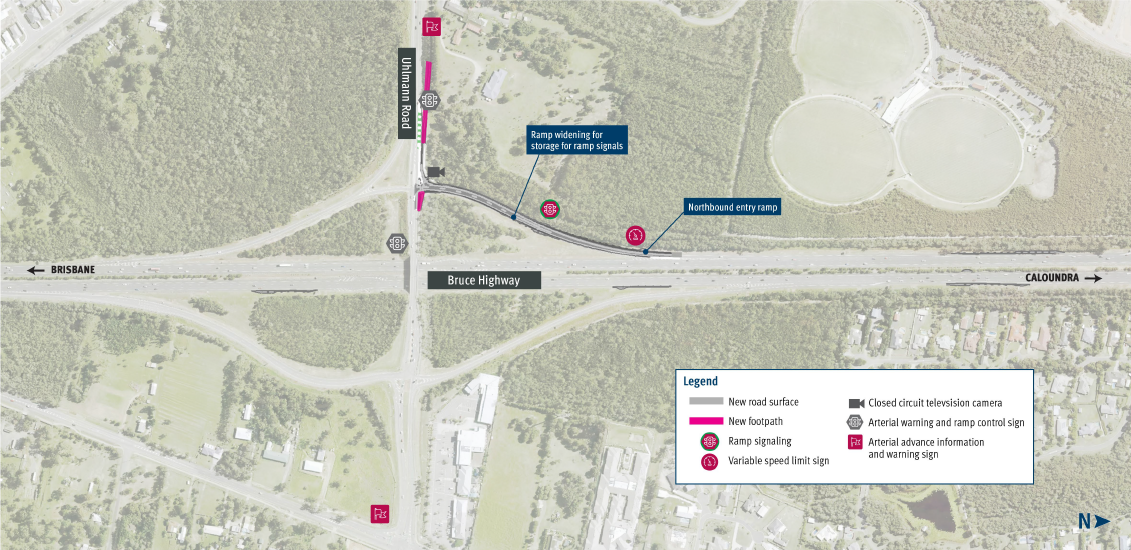
Buchanan Road interchange northbound and southbound entry ramps
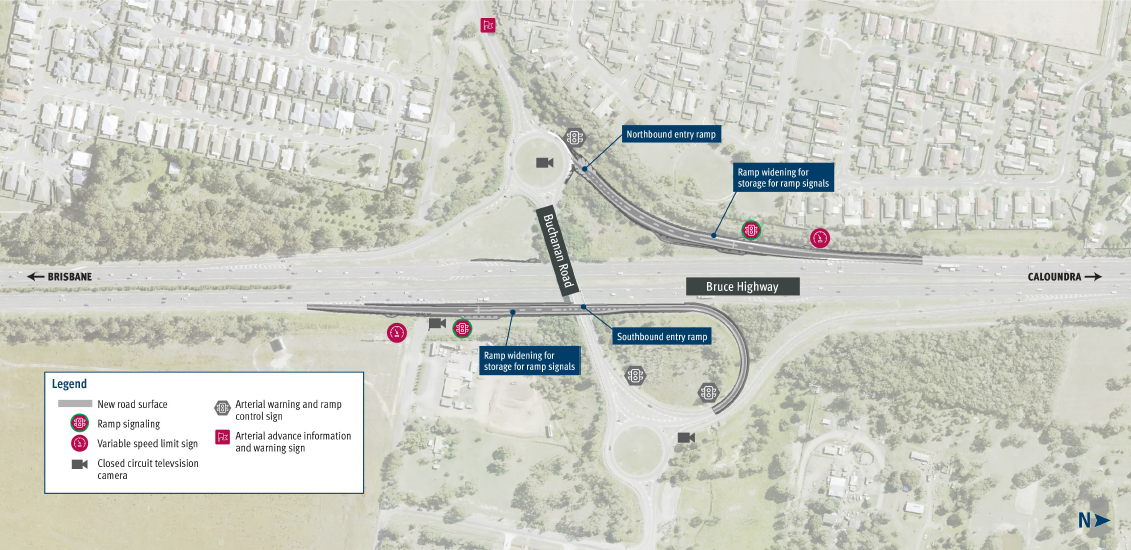
Caboolture-Bribie Island Road interchange southbound entry ramp.
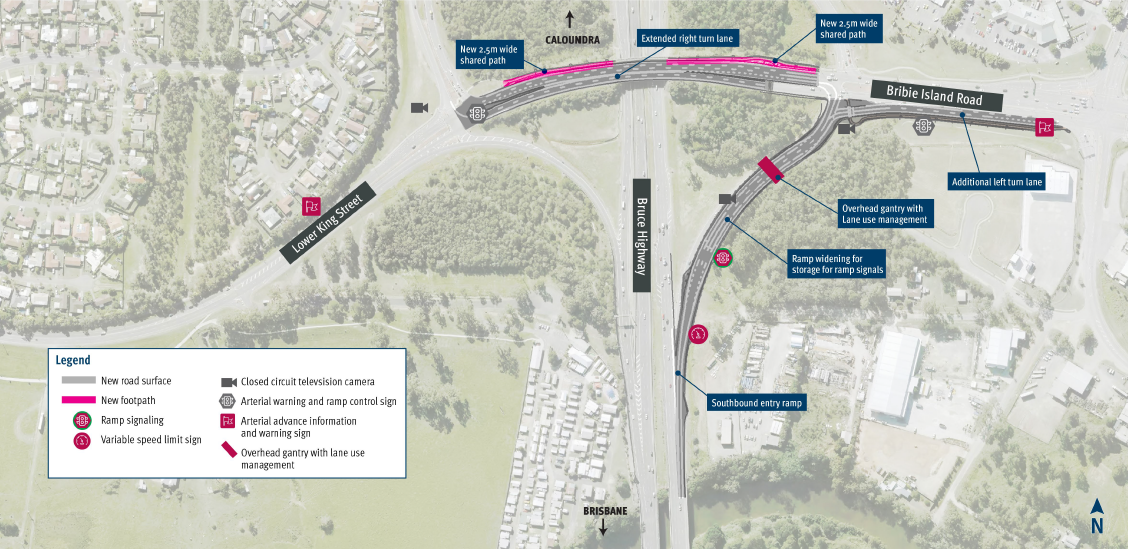
New ramp arrangement at the Bruce Highway southbound entry ramp on Caboolture-Bribie Island Road
A new ramp arrangement and technology at the Bruce Highway southbound entry from Caboolture-Bribie Island Road will feature 2 additional outside lanes to provide greater storage capacity and help manage traffic entering the highway.
Powered by Smart Motorways technology, ramp signals will be activated to open all 4 traffic lanes on the ramp during high demand periods or in response to incidents on the road network. The 2 additional outside lanes will be available for temporary use when the overhead sign is displaying a speed limit.
Once free-flowing traffic conditions return, the temporary use storage lanes will close and the overhead ramp signals will display a solid red cross. Motorists must not travel in these lanes when a cross is displayed overhead.
When the ramp signals are not in use, the ramp will revert to 2-lane operations. The new ramp arrangement is expected to go live in early 2024, weather and construction conditions permitting.
Artist's impression of new ramp arrangement
Off-peak hour
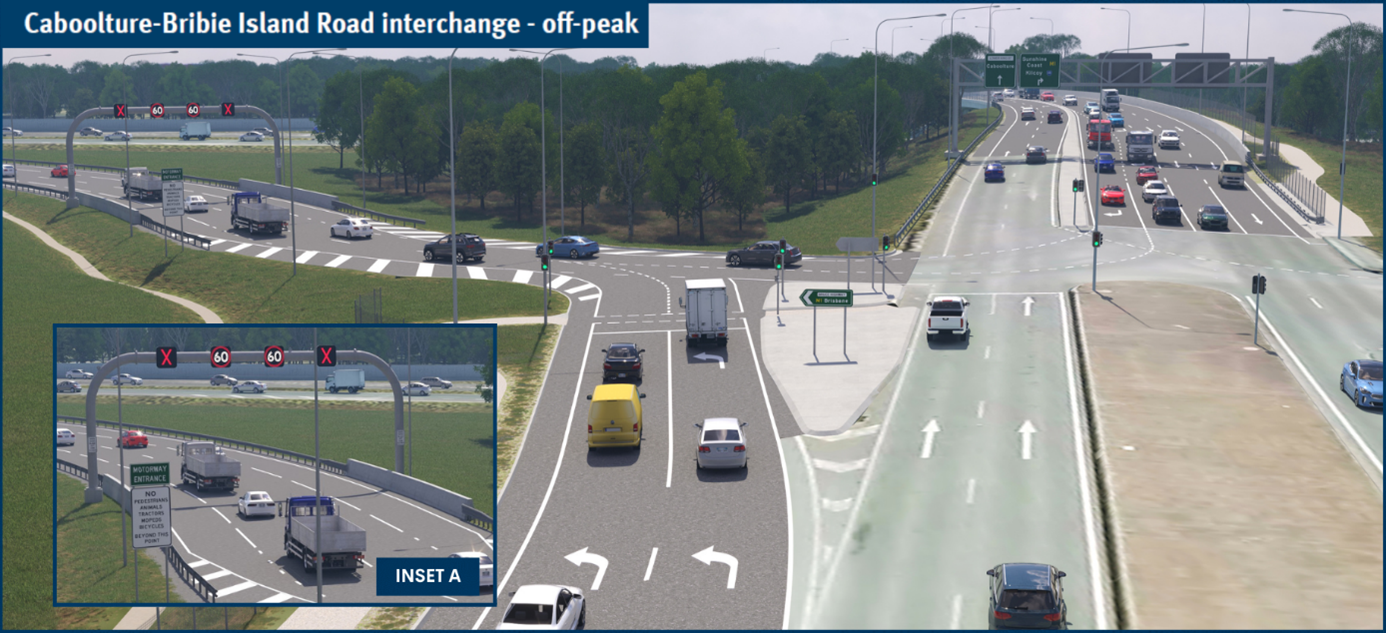
Peak hour
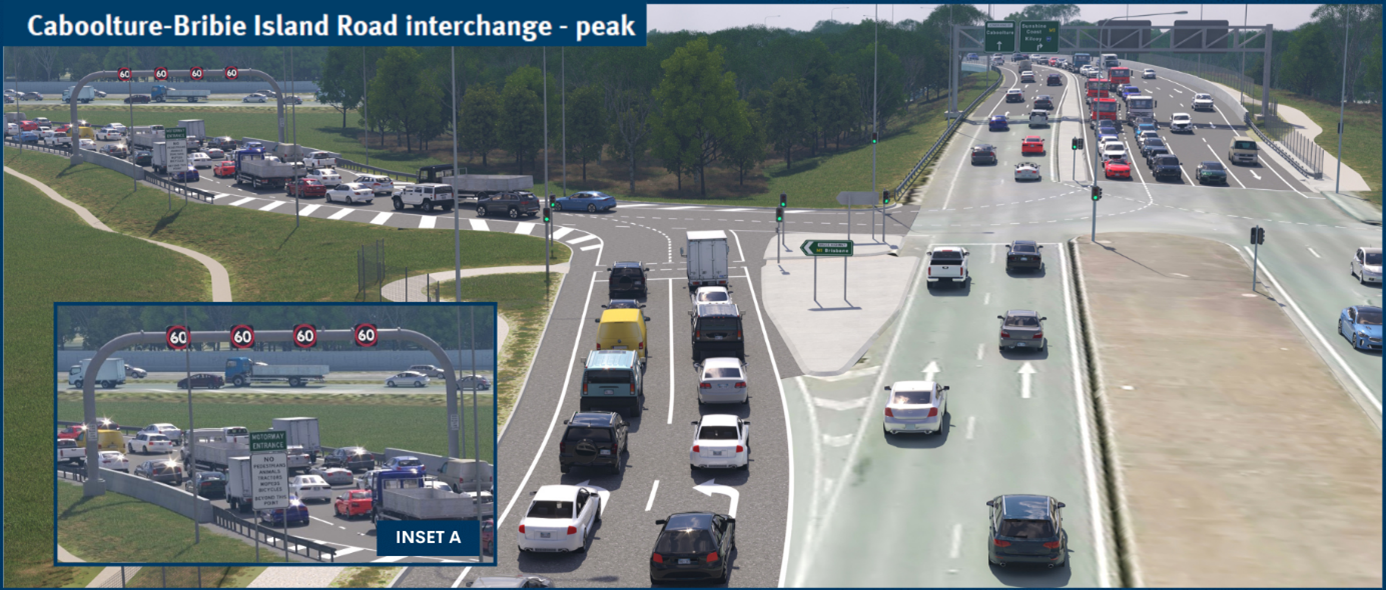
Project layout 1
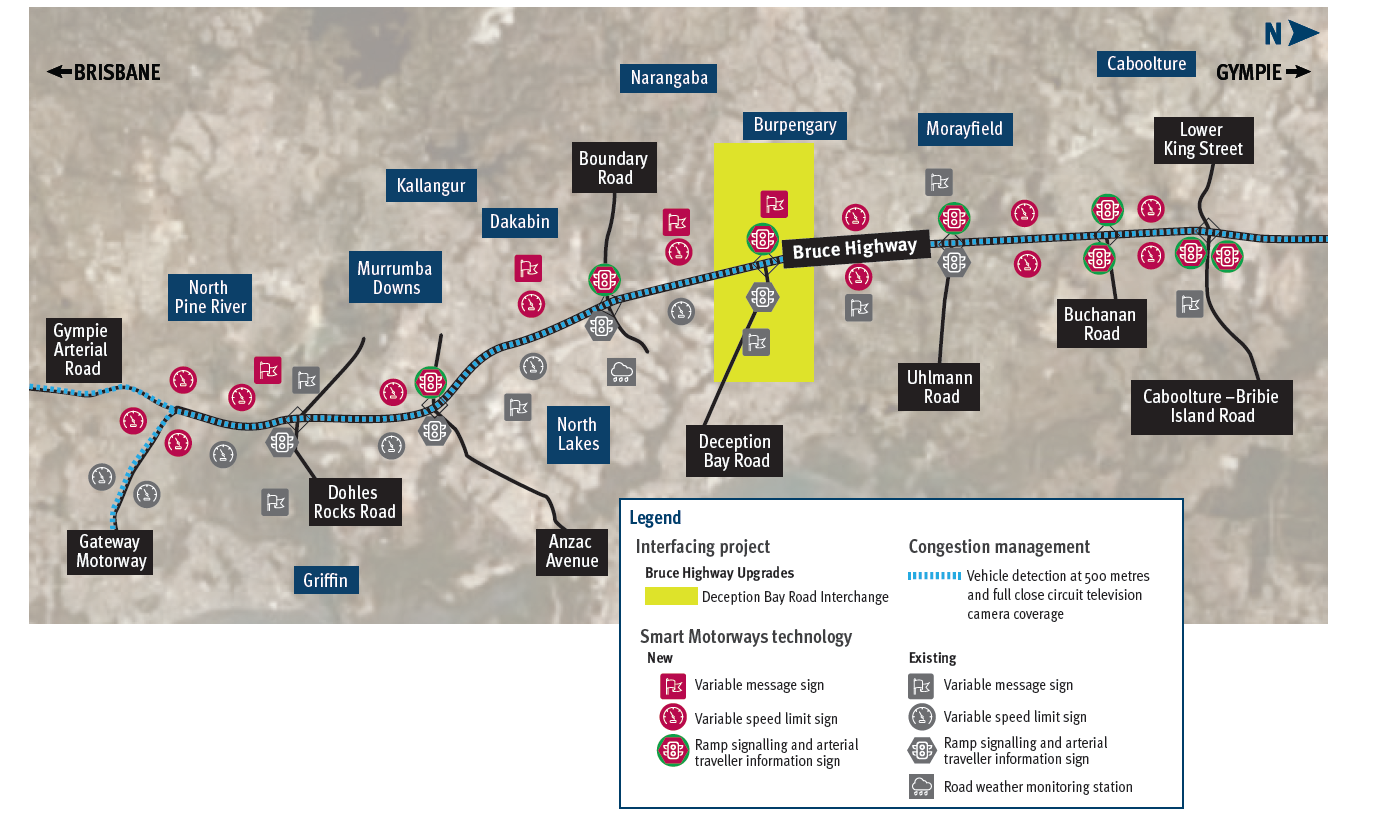
Project layout 2
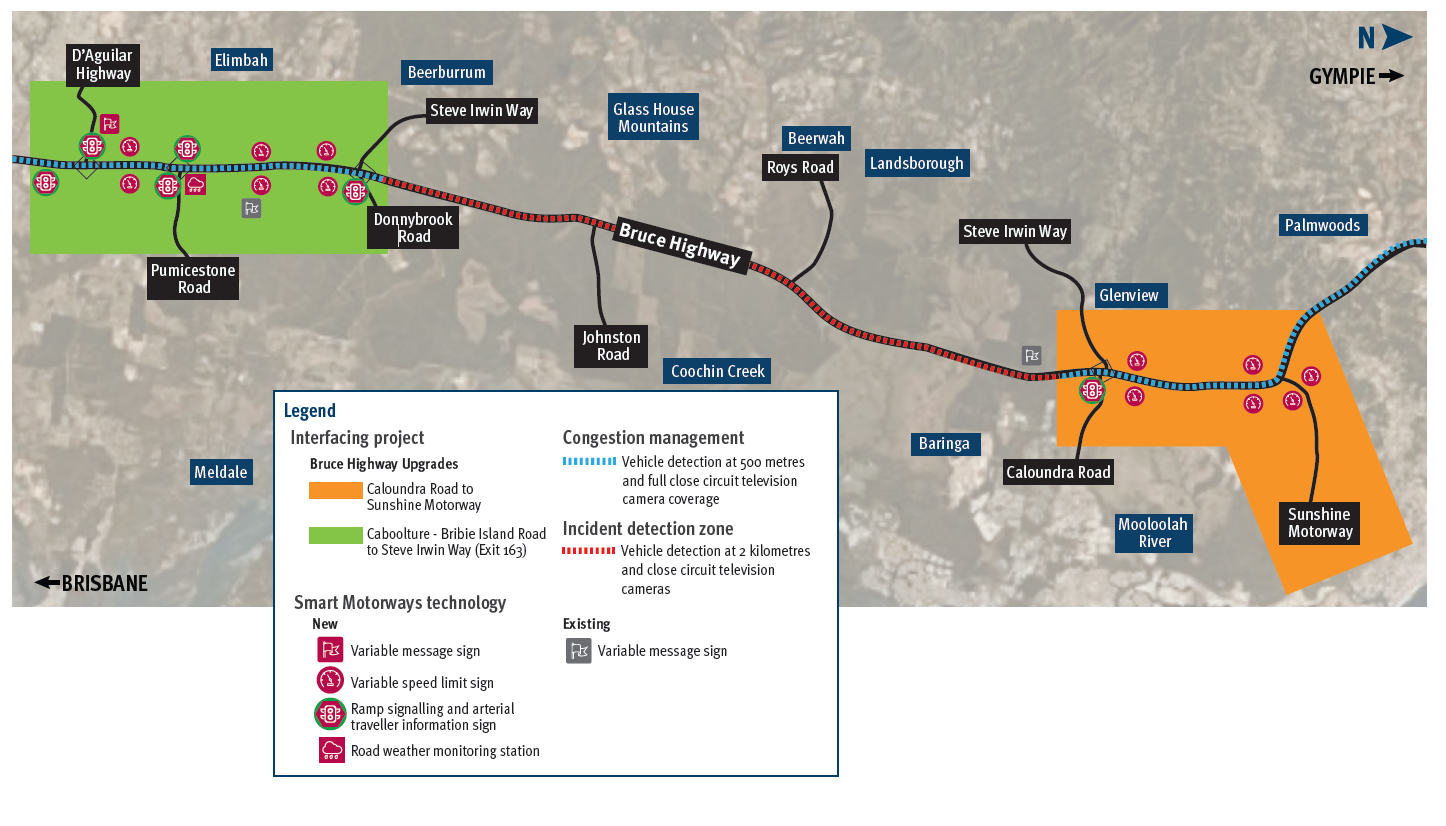
Project video
Video Transcript
The Bruce Highway is a vital artery for Queensland and a nationally-significant freight corridor. This is why the Australian and Queensland Governments are rolling out Smart Motorways technology at priority locations.
Along a 60 km stretch of the Bruce Highway between Pine River at Caboolture and Caloundra Road. The project will complement Smart Motorways Stage 1 technology installed southbound on the Bruce Highway between the Pine River and Uhlmann Road in 2015.
The project will utilise a range of Smart Motorways technology to proactively monitor and respond to traffic conditions in real-time on this section the Bruce Highway such as
- Ramp signals which use traffic signals at highway entry ramps during peak periods to manage traffic entering the highway and helps reduce congestion at merge points
- Variable speed limit signs which notify motorists when speed limits have changed in response to changing road conditions and
- Variable message signs which display information in response to traffic congestion, incidents or bad weather.
These technologies will work together to pro-actively manage the highway as one connected network –
- Helping to improve safety
- Reduce stop-start travel and
- Provide more predictable travel times for road users.
This technology has already been delivered at various locations around South East Queensland including the Gateway, Pacific and Logan motorways - as well as parts of the Bruce Highway which has been effective in reducing rear-end crashes and providing more predictable travel information for motorists during peak travel times.
Smart Motorways Stage 2 technology will be delivered in conjunction with three Bruce Highway Upgrade projects, the –
- Caloundra Road to Sunshine Motorway,
- Caboolture-Bribie Island Road to Steve Irwin Way Upgrade,
- and at the Deception Bay Road Interchange
Smart Motorways will allow the pro-active management of the South East Queensland road network in real-time - enabling motorists to safely travel where they want to go, more reliably.
The funding for this $105 million project is being delivered under an 80:20 federal and state funding arrangement, with the Australian Government contributing $84 million and the Queensland Government contributing $21 million.





